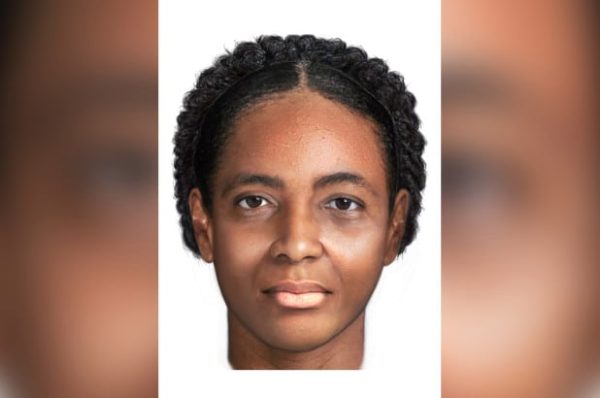The identity of a 150-year-old body found buried in an iron coffin in an old abandoned lot in Queens, New York has finally been revealed.
Construction workers were shocked when they unearthed the human remains while digging in an excavation pit in Elmhurst, Queens in October 2011, the New York Post reported. The workers initially thought they hit a pipe, but their tools emerged from the ground to reveal a woman’s body, still perfectly intact, wearing a long white dress and knee-high socks.
The body was in such good condition that they called 911, thinking they were looking at a possible homicide.

Martha Peterson was found in “excellent” condition when she was accidentally unearthed in 2011. (Image by Joe Mullin)
“It was recorded as a crime scene,” Steve Warnasch, then a forensic archaeologist with the New York City Office of Chief Medical Examiner, told the newspaper. “A buried body on an abandoned lot sounds pretty straightforward.”
After taking a closer look, however, forensic scientists discovered the body was that of a young Black woman born decades before the Civil War who died of smallpox just a few years after New York abolished slavery in 1827. She was later buried on the grounds of a church founded by first-generation emancipated Blacks.
The young woman has since been identified as Martha Peterson, who worked for a white coffin maker with abolitionist leanings, the New York Post reported. According to an 1850 Census of New York City, Peterson was employed as a live-in domestic for William Raymond, one half of the now defunct iron-coffin company Fisk & Raymond. The company would go on to make Peterson’s coffin after her death.
Iron coffins were a 19th century phenomenon, allowing bodies to be sanitarily transported via trains and ships, according to the New York Post. Scientists say Peterson’s body was in such excellent condition that the smallpox lesions were still visible on her skin.
“The body was so well preserved that I would not have been shocked if the smallpox virus had survived,” Warnasch said.
Scientists confirmed the deadly virus had degraded to a nonthreatening level, however. An autopsy also revealed the virus had likely infected Peterson’s brain, eventually killing her.
Because the young woman’s face was so damaged from when construction workers accidentally pulled her from the ground, Warnasch called in Joe Mullins, a forensic-imaging specialist, to put together a recreation of what Peterson might’ve looked like today. Scientists also examined her hair and teeth, determining she had lived in the Northeast for years and ate a balanced diet.
“Finding out who she was, I got goose bumps,” Warnasch recalled.
Peterson’s remains were given a second proper burial by congregants of the Saint Mark AME Church in Jackson Heights in 2016.
A PBS documentary chronicling Peterson’s discovery is set to air Wednesday at 10 p.m.
Watch more in the clip below.